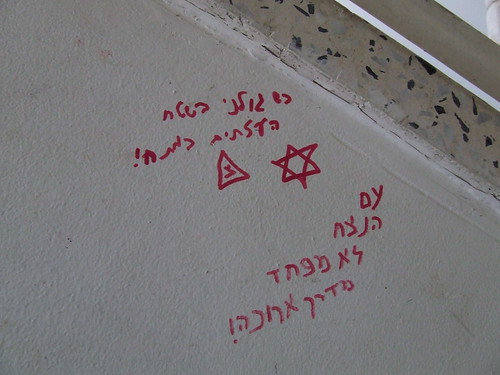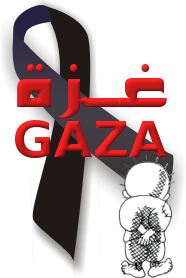Ground Zero - Earlier this week, following the withdrawal of Israeli troops from the Gaza Strip, residents returned to some of the areas which had become no-go zones during the attacks, such as Jabalia just outside Gaza City.
On Tuesday 20th January, Gaza Strip volunteers joined a university professor as he visited his house in the east of Jabalia. We were shown from room to room around the bombed-out shell of what had once been a beautiful home. When asked if he and his family would continue to live there, he replied calmly that it was their right to and that they would never leave their land.
As we made our way up the hill through the orange grove beyond the professor's house, we encountered evidence of where tanks had been positioned - churned up ground, tank tracks, uprooted olive trees. At the top of the hill, from where the Green Line was clearly visible, we began to see homes which had been totally destroyed, several stories concertinaed. Families sat together on the rubble of their homes. Children collected firewood from the dismembered limbs of fruit trees.
At first it seemed as though it was 'just' a cluster of ten or fifteen destroyed houses, which would have been bad enough in its own right. However, as we continued walking it became apparent that the devastation extended into the next street and the next, more and more destroyed and damaged homes following one another. This entire neighbourhood on this easternmost edge of Jabalia had been virtually wiped off the face of the earth. It resembled the site of some massive natural disaster. However this ground zero was entirely man-made.
The gouged-out windows of some of the homes still standing were filled with dark green sand bags. This was a sign these houses had been used by the Israelis as sniper positions. One could barely imagine how the situation must have been in this neighbourhood when it was under attack.
We met a blind woman who had been held prisoner for 11 days in one room of her home, along with a paralysed man, whilst Israeli soldiers used it as a base. Terrified and expecting to be killed at any time, they were given water twice during their ordeal. When the Red Crescent evacuated them, the woman said she could finally breathe for the first time since the soldiers arrived. The walls had been daubed with Hebrew graffiti, empty plastic food trays were strewn around and the stairway stank of urine.
In the wake of a Gazan holocaust, thousands of people are finding themselves in truly desperate situations. A traumatized but resilient population is somehow beginning to pick up the pieces.
Merely continuing to exist is a form of resistance.
Footage from Jabalia
https://rcpt.yousendit.com/644634576/2001714de861e8d18d5ce5675979e9fb (part 1)
https://rcpt.yousendit.com/644665552/9c055ba289efc6701688653011fbb0b7 (part 2)
https://rcpt.yousendit.com/644691744/cc60e9fcb64d3a0acf0ee37ce5bff658 (part 3)





No comments:
Post a Comment